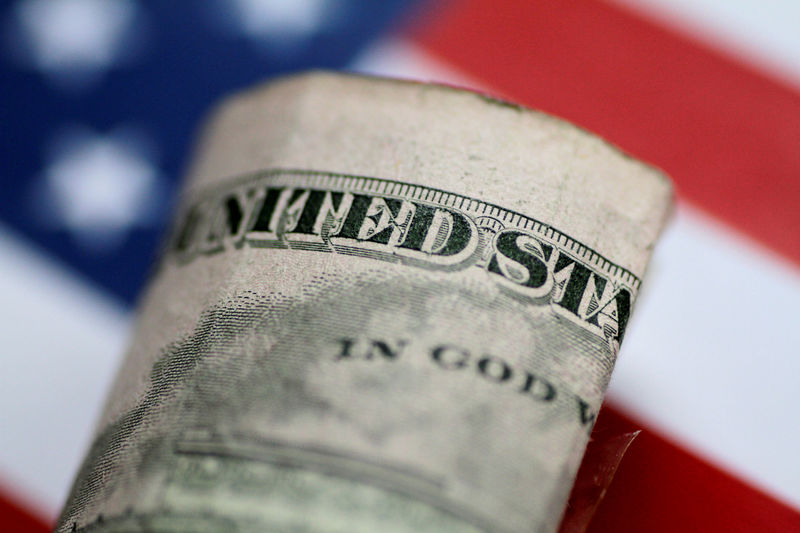By Peter Nurse
Investing.com - The dollar was largely flat in Europe early Friday, maintaining the week’s gains on a safe haven bid amid rising Covid-19 cases worldwide. High U.S. inflation is also lifting expectations of an early reduction in the Federal Reserve’s $120 billion in monthly bond purchases
At 2:55 AM ET (0755 GMT), the Dollar Index, which tracks the greenback against a basket of six other currencies, traded flat at 92.620, edging towards gains of around 0.5% for the week which, if sustained, would mark its biggest weekly percentage gain in a month.
EUR/USD was marginally lower at 1.1808, GBP/USD slipped slightly to 1.3822, while the risk-sensitive AUD/USD rose 0.1% to 0.7435, but is down 0.7% over the week.
USD/JPY rose 0.1% to 109.98 after the Bank of Japan kept its interest rates unchanged at a policy meeting, while cutting its forecast for the current fiscal year’s growth to 3.8% from April’s 4.0% forecast.
Rising Covid-19 cases, mainly in southeast Asia, but also in Europe and the U.S., have turned many traders risk averse, to the benefit of the dollar.
In Australia, Melbourne has joined Sydney in lockdown, meaning around 40% of the country’s population are suffering from restrictions; Indonesia is now fighting a "worst-case scenario" epidemic, according to a senior minister; South Korea, previously a Covid success story, has been suffering from a new wave of persistent infections; while Japan has declared a state of emergency around Tokyo, meaning the upcoming Olympics will take place without spectators. Los Angeles county meanwhile has reinstated its mask mandate for indoor environments.
At the same time, although Federal Reserve Chairman Jerome Powell has tried to play down expectations of an early tightening move by the central bank, strong inflation numbers and a shift in interest rate expectations after the Fed flagged sooner-than-expected hikes in 2023 have put a floor under the greenback.
“With the Fed expected to start the QE tapering later this year and our economists’ view that the hiking cycle with start in 2H22 (with two rate hikes), the dollar downside vs the low yielding G10 FX (where central banks should remain cautious both this year and next) should be rather limited,” said analysts at ING, in a note.
Elsewhere, NZD/USD rose 0.5% to 0.7014 after New Zealand’s consumer price index for the second quarter grew 3.3% year-on-year and 1.3% quarter-on-quarter, a decade high.
The Reserve Bank of New Zealand is now widely expected to hike interest rates in August, earlier than expected.
Elsewhere, the South African rand rebounded 0.6% to 14.4697 to the dollar, amid signs that the wave of violence that has racked the country in recent days may be subsiding.
